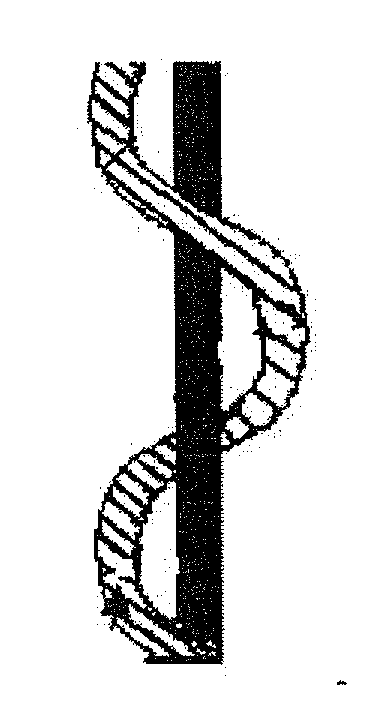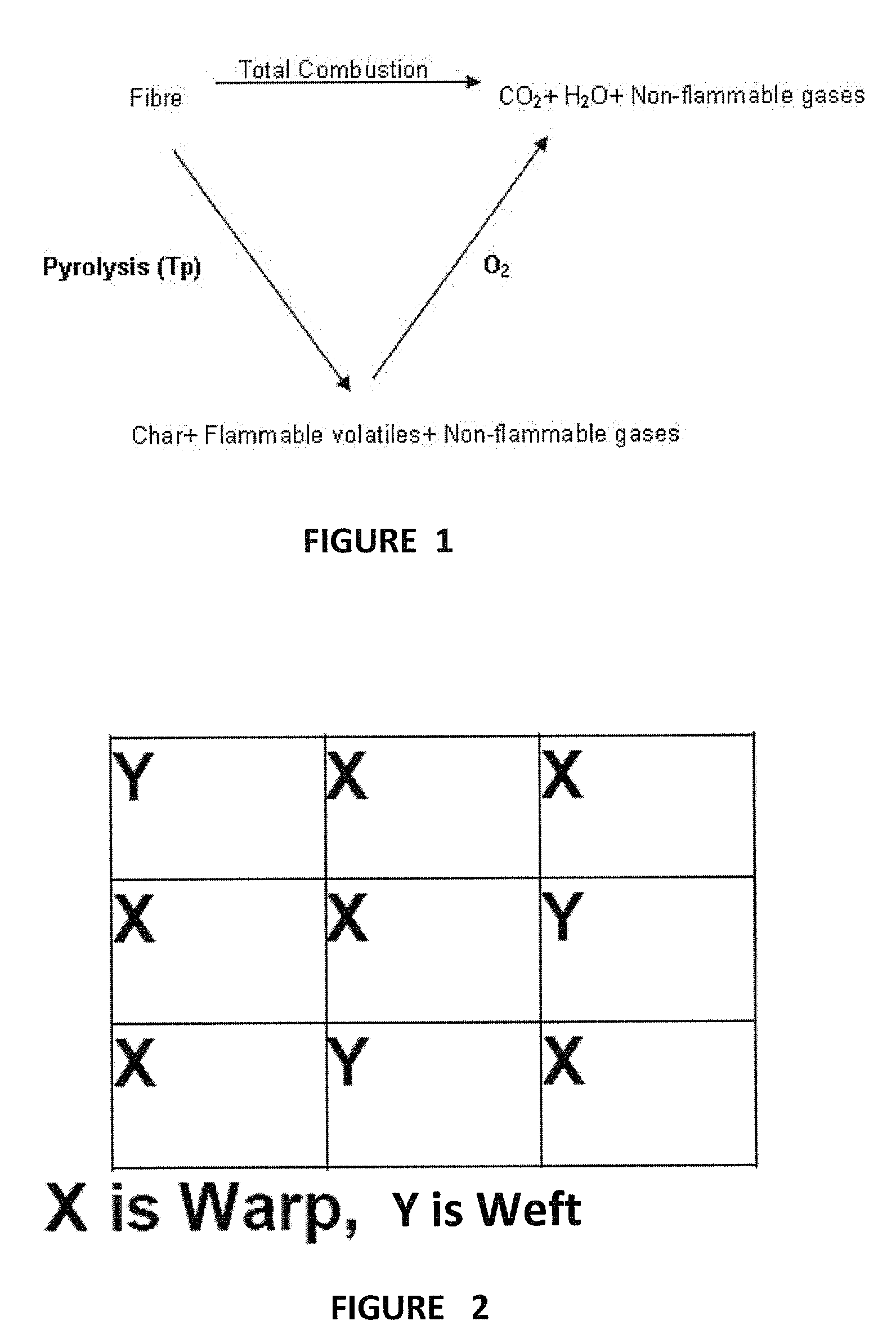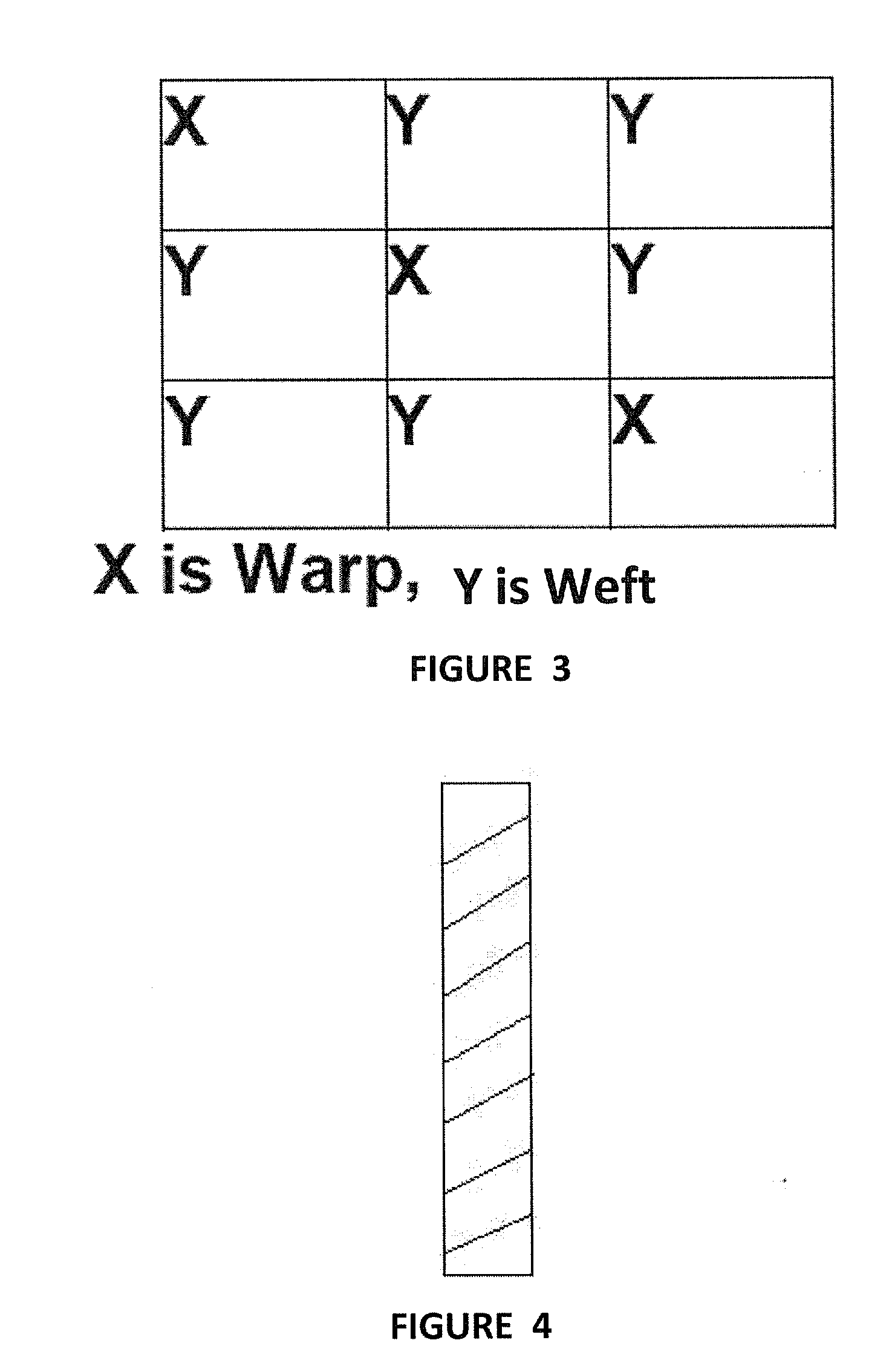Flame, Heat and Electric Arc Protective Yarn and Fabric
a technology of protective yarn and heat arc, applied in the field of yarns and fabrics, can solve the problems of reducing the effectiveness of firefighters, reducing the productivity and reaction time of workers, and heat stress, and achieves the effects of enhancing the protection of flames, cost saving, and durable monolayer fabrics
- Summary
- Abstract
- Description
- Claims
- Application Information
AI Technical Summary
Benefits of technology
Problems solved by technology
Method used
Image
Examples
example 1
[0092]A blend of fibers, commercially available, one under the trade name Twaron poly-paraphenylene terephthalamide (para-aramid) 1.7 dtex having a cut length of TBD from AKZO, and another fiber poly-metaphenylene isophthalamide (meta-aramid) 2.2 dtex having a cut length of TBD from TBD and 2 wt-% of carbon core polyamide sheath stainless steel fibers was ring spun into a single staple yarn (Y1) using conventional staple yarn processing equipment.
[0093]The meta-aramid fibers had a cut length of 51 mm and a linear density of 1.7 dtex. The para-aramid fibers had a cut length of 50 mm and a linear density of 2.2 dtex. The anti-static fibers had a stainless steel fiber with a cut length of 40 mm and a linear density of 6.8 μm.
[0094]Y1 had a linear mass of Nm 55 / 1 or 185 dtex and a twist of 700 Turns Per Meter (TPM) in Z direction. FIG. 4 depicts the spin direction Z for staple yarn Y1.
[0095]Two Y1 yarns were then plied and twisted together. The resulting plied yarn (TY1) had a linear de...
example 2
Current State of the Art
[0139]A blend of fibers, commercially available under the DuPont trade names NOMEX® (meta-aramid) and KEVLAR® (para-aramid) provided in a DuPont fabric Protera™ totaling 33 wt % NOMEX® and KEVLAR® in a single layer twill weave at 6.8 oz / sq yd, similar to, but not in the same wt % of meta-aramid and para-aramid as the invention disclosed herein.[0140]Report 9: DuPont Protera™ 12 second vertical flammability, NFPA 70:2009 Standard for Electrical Safety in the Workplace, ASTM D 6413 Standard Test Method Flame Resistance of Textiles (Vertical Test) and ASTM F 1506 Standard Performance Specification for Flame Resistant Textile Materials for Wearing Apparel for Use by Electrical Workers Exposed to Momentary Electric Arc and Related Thermal Hazards paragraph 130.7. The material weight was 6.8 oz / yd. The tests were performed prior to laundering. 10 specimens of the woven fabric were tested according to the following criteria with the corresponding results:[0141]5 spe...
example 3
Current State of the Art
[0152]A blend of fibers, commercially available under the DuPont trade names NOMEX® (meta-aramid) and KEVLAR® (para-aramid) provided in DuPont fabric NOMEX® IIIA totaling 93 wt % NOMEX®, 5 wt % KEVLAR® and 2 wt % anti static in a single layer twill weave at 8.0 oz / sq yd similar to, but not in the same wt % of meta-aramid and para-aramid as the invention disclosed herein.[0153]Report 11: DuPont NOMEX® IIIA 12 second vertical flammability, NFPA 70:2009 Standard for Electrical Safety in the Workplace, ASTM D 6413 Standard Test Method Flame Resistance of Textiles (Vertical Test) and ASTM F 1506 Standard Performance Specification for Flame Resistant Textile Materials for Wearing Apparel for Use by Electrical Workers Exposed to Momentary Electric Arc and Related Thermal Hazards paragraph 130.7. The material weight was 8.0 oz / yd. The tests were performed prior to laundering. 10 specimens of the woven fabric were tested according to the following criteria with the co...
PUM
| Property | Measurement | Unit |
|---|---|---|
| LOI | aaaaa | aaaaa |
| cut length | aaaaa | aaaaa |
| cut length | aaaaa | aaaaa |
Abstract
Description
Claims
Application Information
 Login to View More
Login to View More - R&D
- Intellectual Property
- Life Sciences
- Materials
- Tech Scout
- Unparalleled Data Quality
- Higher Quality Content
- 60% Fewer Hallucinations
Browse by: Latest US Patents, China's latest patents, Technical Efficacy Thesaurus, Application Domain, Technology Topic, Popular Technical Reports.
© 2025 PatSnap. All rights reserved.Legal|Privacy policy|Modern Slavery Act Transparency Statement|Sitemap|About US| Contact US: help@patsnap.com



